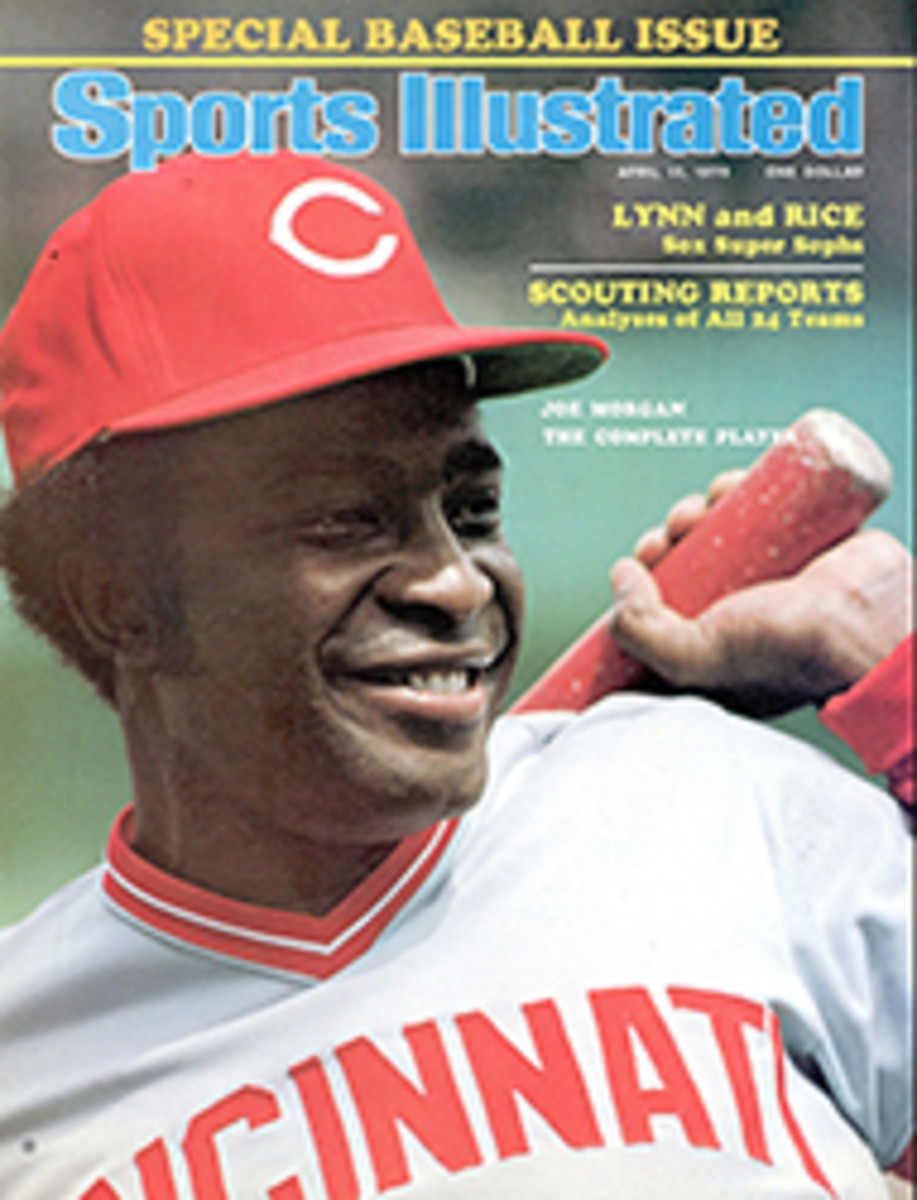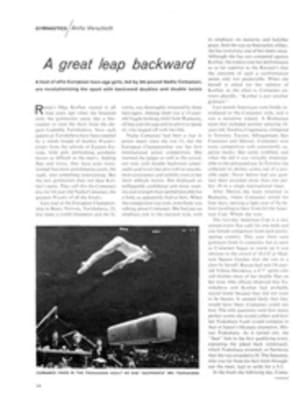
The king of the mountain
Henri Duvillard was one of the bad boys of French skiing, a malcontent and a misanthrope who, in the bitter February of 1973, was exiled from what was then one of the best men's ski teams on earth. He had been labeled an upstart and a loser, and one French newspaper had printed his photograph with a large black X over it. From being the best all-round skier on the World Cup circuit he was in a matter of days reduced to teaching a children's racing class in his hometown of Még√®ve. But time passes—more than two years—and here is Henri Duvillard now, vintage 1976, a smiling, confident chap, rich, famous and phenomenal at his chosen profession.
Indeed, no more than a scant handful of athletes have ever dominated a sport the way Duvillard, the 5'6", 145-pound farm-boy from the French Alps, is dominating the world of professional ski racing. As the season came to an end last week with a pair of races in Vail, Colo., Duvillard—"Dudu" to his friends—had set a record of 15 wins in 21 races and had a prize-money treasure chest of $66,900. His nearest challenger for money won was Josef Odermatt of Switzerland, with $31,500. There were no other multiple victors; no other racer among the 50-odd regulars on the pro circuit won more than one race in 1975-76.
To realize how remarkable Duvillard has been, one must understand something of the grueling sport that pro ski racing has come to be. The season is spread over 11 weekends, from early December to early April. This year there were 21 head-to-head races at a motley assortment of resorts and winter tourist traps. This past winter one weekend program was held on a couple of rolling riverbank hillocks called Afton Alps, a few miles out of St. Paul, Minn. Another was staged at Mt. Holly, Mich. on a mound of artificial snow-covered soil where the vertical drop had recently been increased 40 feet by workers who dug a 20-foot trough at the bottom and hauled the dirt to the top. There was a race at Hunter Mountain, N.Y., a Catskill area that some skiers thought was a lot like the last subway stop in the Bronx. Other races were held in Idaho and north of the border in Ontario and Quebec.
Besides having to adjust to these various racing environments, the athletes also lead the nomadic lives of traveling salesmen. And they are salesmen in the truest sense. Sponsors have turned the racers into walking, skiing billboards, and with each endorsement contract goes the tacit requirement that they must appear at endless cocktail parties to smile, mingle and meet the buyers and the public. The pro skiers also must endure the contests themselves—a killing regimen if there ever was one. As a rule, they race a giant slalom each Saturday, a slalom each Sunday. All are run in head-to-head challenge fashion, each pair of racers switching courses, the winner being the one with the best elapsed time in the combined runs. Under the most recent rules, these elimination contests begin with a field of 32, roll on through race after race after race until a winner is selected—after making what may be his 10th run over a period of, say, five hours. And this they go through twice a weekend.
The stamina required for such work would exhaust a railroad locomotive. The agility and balance would unhinge the man on the flying trapeze. Any tiny mistake, any slightly wide turn on any one of dozens of gates, any misstep off the homemade jumps at about 40 mph can cost the race.
Despite these demands, Duvillard managed on five different occasions to win both races in a single weekend. In the seven years since Bob Beattie introduced pro racing to the U.S., no one has come close to that. In the six seasons he raced, the late Spider Sabich did it only three times. During one hot streak Duvillard won seven consecutive races over four weekends, a total of 56 straight runs without a mishap. In the two years he has been on the tour Duvillard has won 25 races. The next best, Sabich, had 21 victories in six years.
It all seems to border on the miraculous and it will probably never happen again, yet Duvillard is not particularly awed by his feats. "I expect, 90% of the time, to beat my fellow racer out at the starting gate," he says. "This I can do. Then I try to win the first run by a good margin—six-tenths or seven-tenths of a second. This forces my opponent into errors on the second run. He goes out of order in his run. He falls, perhaps." But besides the explosive start, racing experts say that Duvillard also has perfected an excellent flat thrust of his inside ski on turns, a quick and smooth motion that brings him around a slalom pole more swiftly than other racers. It is a motion that only World Cup champions Gustavo Th√∂ni and Ingemar Stenmark can execute as well as Duvillard. And there also is conditioning; Duvillard is grim about it, a workhorse who drives himself far harder than most pros.
Constant traveling companions with Duvillard on the World Pro ski tour are three other victims of the French purge: Patrick Russel, World Cup slalom co-champion in 1969 and 1970 and giant slalom champion in 1971; Jean-Noël Augert, winner of the 1970 world slalom championship in Val Gardena and a World Cup slalom champion in 1969, 1971 and 1972; and Alain Penz, twice World Cup slalom co-champion.
Duvillard, now 28, was perhaps the most promising of them all. Twice, in 1971 and 1972, he was runner-up for the overall World Cup title. He was the only amateur skier since Killy to win races in all three World Cup disciplines—the downhill (his forte), giant slalom and slalom. After Killy's showing at the 1968 Olympics France was expected to excel at Sapporo in 1972. The French men's team came up flat. Augert placed fifth in both the slalom and giant slalom and Duvillard was fourth in the slalom, but in the downhill he finished a dismal 19th and back home in France this was considered a near tragedy. Rather wanly, Duvillard recalls, "A newspaper ran pictures of Jean-No√´l and of me. They placed crossed black lines over our faces. They wrote that we were failures."
A new coach was named in the spring of '72—one Georges Joubert of the University of Grenoble, an expert technician, but, says Duvillard, "For the mind he was so bad." Friction arose almost immediately on the team. "We did not know him well. It was not long before we saw that he worked only with the young skiers and left out us old ones."
The French team staggered the following season. After one race in February of 1973, the national ski federation fired Duvillard, Russel and Augert, citing insubordination, attempts to make independent equipment deals and rebellion. "The papers wrote only what the federation told them. We had no place to tell our story," Duvillard says. He went home to Még√®ve to languish through the rest of the winter and the following season. He became engaged to Britt Lafforgue, one of a pair of brilliant ski-racing twins—both of whom were also bounced from the team. In the spring of 1974 Duvillard saw one U.S. pro race in France; he thought it might be just his dish and he joined the tour for the 1974-75 season. He finished second to Hank Kashiwa for the pro title (it was figured on points scored; Duvillard won more money than Kashiwa). From that beginning Duvillard became merely superhuman this year.
And so he remained as the season ended at Vail. His title long since locked up, he won Saturday's giant slalom and made it to the quarterfinals in the Sunday slalom. Savoring his U.S. celebrity, Duvillard noted wryly, "In France they hardly know I've done all this."
Ironically, America's pro skiing gain is France's loss. Since Dudu & Co. were purged, not one male citizen of France has won a World Cup race. Asked about this, Duvillard smiled thinly, "The best people do not ski for the team, I think," he said. "French World Cup skiing is a basket of crabs now. No one wants to live in a basket of crabs."
Pro skiing has rewarded the farmer's son well. The most he was ever paid as an "amateur" racer was about $18,000 in 1972. Duvillard will clear well over $150,000 this year with prizes and endorsements. He will race again next season, and though no one expects a repeat of this year's miracle, his future is bright.
Perhaps the future of the French ski team may hold some promise, too. The far-off future, that is. For not only has Duvillard married Lafforgue, the 1971 and 1972 World Cup slalom champion (and produced one child), but Augert has wed Fran√ßoise Macchi, a giant slalom co-champion in 1970 and the World Cup overall leader in 1972 until she injured her knee just before the Olympics. And Penz has married Florence Steurer, the slalom bronze medalist of Sapporo. Thus, by 1996 or so, all the fugitives from French skiing may be forgiven—at last. They may well become national heroes again, for the fortunes of France may rise once more on the swift skis of the progeny of the bad boys and their talented wives.
PHOTO

